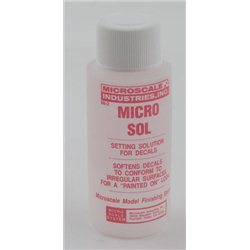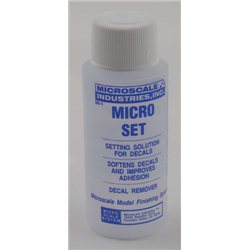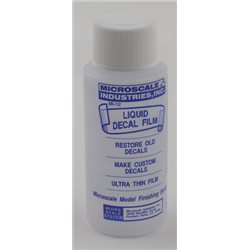Static grass puffer bottles work by manually charging model grass fibres with static electricity. When the charged...
No products
Product successfully added to your shopping cart
There are 0 items in your cart. There is 1 item in your cart.
Search Tips
What are waterslide transfers?
Waterslide transfers are a key component of scale modelling, allowing you to add intricate markings, insignias and text to your models with precision and realism. These decals are named for their application method, which involves soaking them in water to release them from their backing paper before sliding them onto the model's surface. They are widely used in model kits for military vehicles, aircraft, cars, trains and even figurines, helping to replicate real-world details that would be difficult to paint by hand.
The key advantage of waterslide transfers is their ability to create sharp, detailed designs without thick edges or visible adhesive, as seen with traditional stickers. This ensures a painted-on appearance that enhances the model's realism. Unlike vinyl or peel-and-stick decals, waterslide transfers conform more naturally to complex curves and panel lines, especially when used with setting solutions like Micro Set or Micro Sol, which help them adhere smoothly and blend seamlessly with the model's surface.
To apply waterslide transfers effectively, you need a few basic tools: a small dish of water (preferably lukewarm), tweezers, a soft brush and a cotton bud or tissue for removing excess moisture. After cutting out the decal, soak it in water for a few seconds until it starts to lift from the backing paper. Using tweezers or a brush, gently slide the transfer onto the model, positioning it carefully before patting it down to remove any trapped air or water. Some modellers prefer to apply a gloss varnish before placing decals to reduce the risk of "silvering"—an effect where tiny air bubbles create a frosted look under the transfer.
Once applied and fully dry, sealing the transfer with a layer of clear varnish is recommended to protect it from handling and weathering techniques. A matt, satin or gloss varnish can be used, depending on the desired finish. For military and aircraft models, modellers often blend the decals further by applying weathering effects, such as washes or dry brushing, to make them appear worn or faded. This is particularly useful for replicating historical or battle-hardened vehicles.
Waterslide transfers vary in quality, with some brands offering exceptionally thin and detailed decals that require careful handling, while others might be thicker and more robust but harder to conform to irregular surfaces. If you find that a transfer is too stiff, using a decal softening solution can help it conform better. Some advanced modellers even replace kit-supplied decals with aftermarket options to achieve a more accurate or customised look.
Click here to receive the tips weekly in your mailbox. You can unsubscribe at any time.










